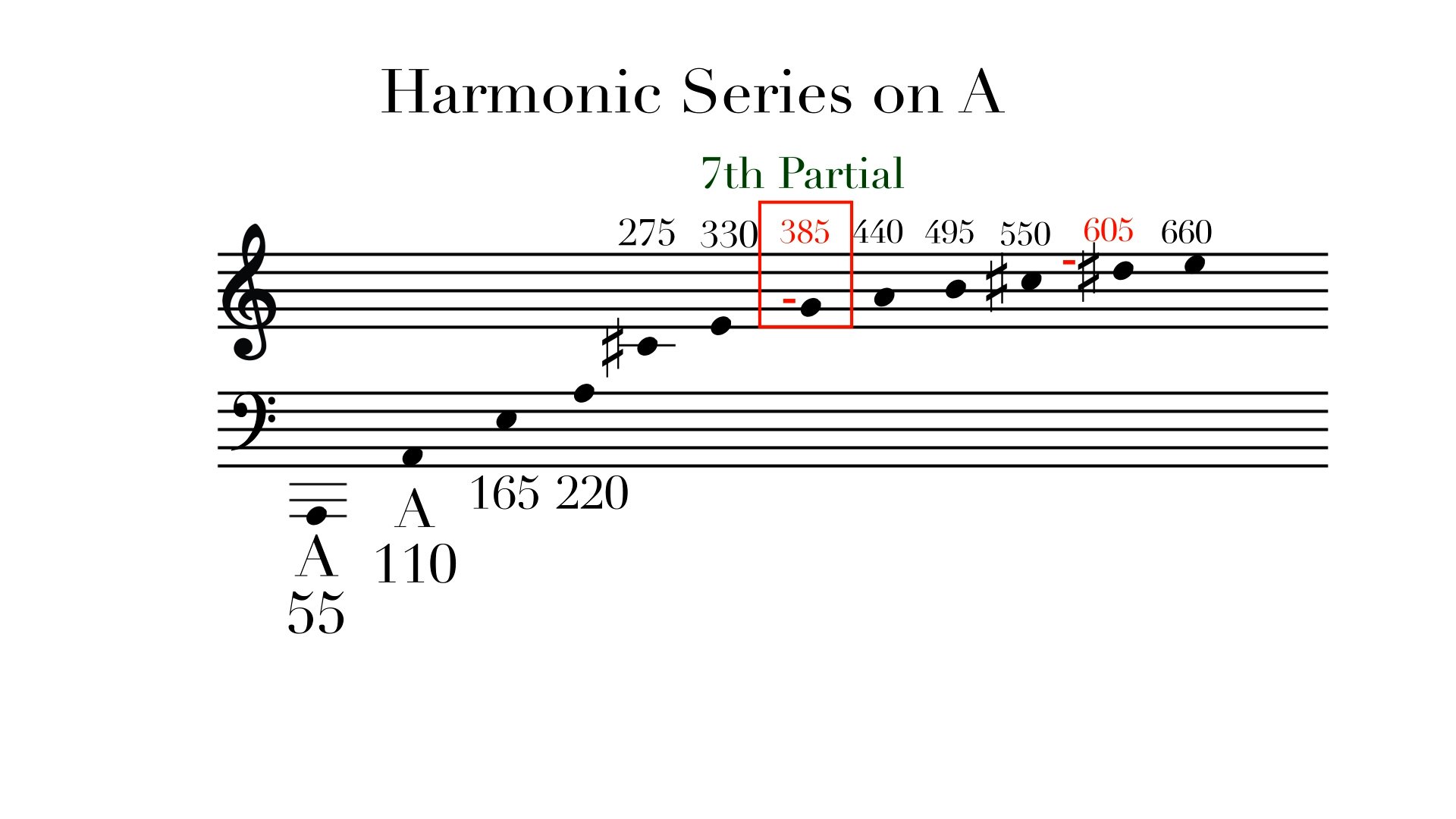Introduction To The Harmonic Series
When you play a note on an instrument, say Middle C on a piano, the resulting sound wave is complex. That piano string vibrates as a whole, but it also vibrates in parts. It vibrates in half, in thirds, in fourths, and so on. When it does this, it produces pitches above the note that was played. We call these overtones, or harmonics.
In this series, we call the bottom note the “fundamental” or the “first partial”. That fundamental will have a particular frequency. For the A below the bass clef, that frequency is 55 Hz. This fundamental frequency is important because the harmonic series is an additive series, which means each additional partial is found by adding the fundamental frequency. So, the second partial will be 55 plus 55 which is 110. Which gives us the A an octave above, because 2:1 is the ratio that gives us an octave. From there, we just keep adding 55 Hz to the previous partial to get the rest of the notes in the series. In theory, this series continues to infinity. It’s important to note that all of the partials above the fundamental are substantially quieter than the fundamental. But the lower the fundamental, the more overtones are in human hearing range. This is what gives low notes their “rich” quality, because they are being reinforced by many overtones.
This is the A harmonic series. Every note has its own harmonic series. Eb has its own harmonic series. G# has its own.
An interesting property of the harmonic series is that the pitches get increasingly closer together. You’ll notice that the first two are an octave apart, then a Perfect 5, then a Perfect fourth, a major 3rd, a minor third, and so on. The perfect 5th appears very early on in the overtone series, suggesting a strong relationship between tonic and dominant, which is the basis of our tonal system. You’ll notice that the first three unique notes in the series create a major chord. And there is a theory that suggests that the reason major scales are the basis of so much of music is because it is embedded in the overtone series. I’ll let everyone debate that in the comments.
Because the harmonic series is a naturally occurring process, it doesn’t conform to our man-made 12 tone equal temperament system. So when you’re listening to the harmonic series, some notes might seem out of tune...some of them further “out of tune” than others.
Like the 7th partial, it’s not really a “g natural” as we think of it on a piano. And the 11th partial, it’s almost halfway between D and Eb. It’s E half flat. Beyond the 16th partial, the notes continue getting closer and closer together, which means that all of the notes are closer together than an equally tuned half step.





